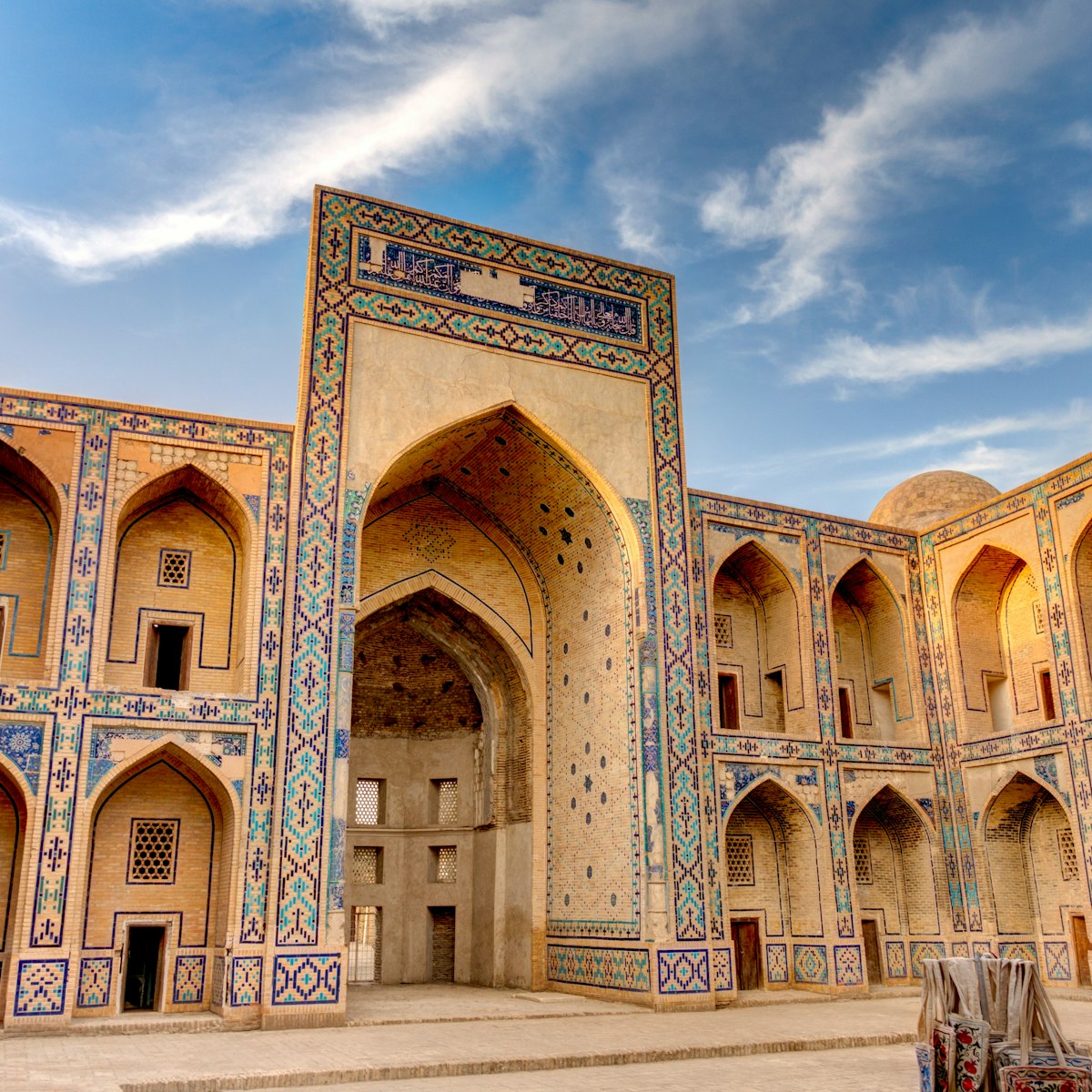Samarkand’s most moving and beloved site is this stunning avenue of mausoleums, which contains some of the richest tilework in the Muslim world. The name, which means ‘Tomb of the Living King’, refers to its original, innermost and holiest shrine – a complex of cool, quiet rooms around what is probably the grave of Qusam ibn-Abbas, who is said to have brought Islam to this area in the 7th century. The most stunning Timurid-era tilework dates from 14th and 15th centuries.
A shrine to Qusam, a cousin of the Prophet Mohammed, existed here on the edge of Afrosiab for around seven centuries before Timur (Tamerlane) and later Ulugbek buried their family and favourites near the sanctity of the original shrine.
The most beautiful tomb is the Shodi Mulk Oko Mausoleum (1372), resting place of a sister and niece of Timur, second on the left after the entry stairs. The exquisite majolica and terracotta work here – notice the minuscule amount of space between the tiles – was of such exceptional quality that it merited almost no restoration.
After remarkably surviving more than seven centuries with only minor touch-up work, many of the tombs were aggressively and controversially restored in 2005. As a result, much of the brilliant mosaic, majolica and terracotta work you see today is not original.
Shah-i-Zinda is an important place of pilgrimage, so enter with respect and dress conservatively. Just outside the entrance are the foundations of a 15th-century tahorathana (bathhouse). At the end of the pathway between the mausoleums, the complex opens up into Samarkand's main cemetery, which is a fascinating place to walk.






